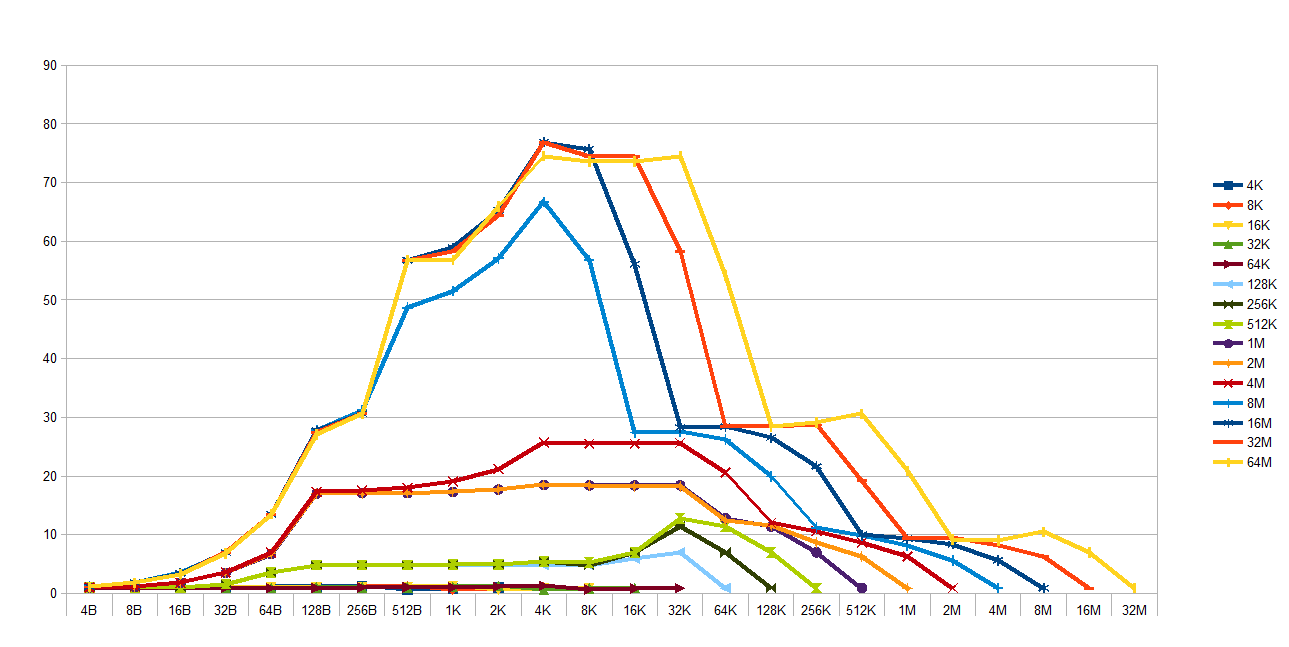I have this cache latency graph and I am trying to figure out how to find the cache block size for L1, L2 and L3 caches from it but I cant find anything on how to do so I was able to guess the total cache size though. 
Any help is appreciated thanks.